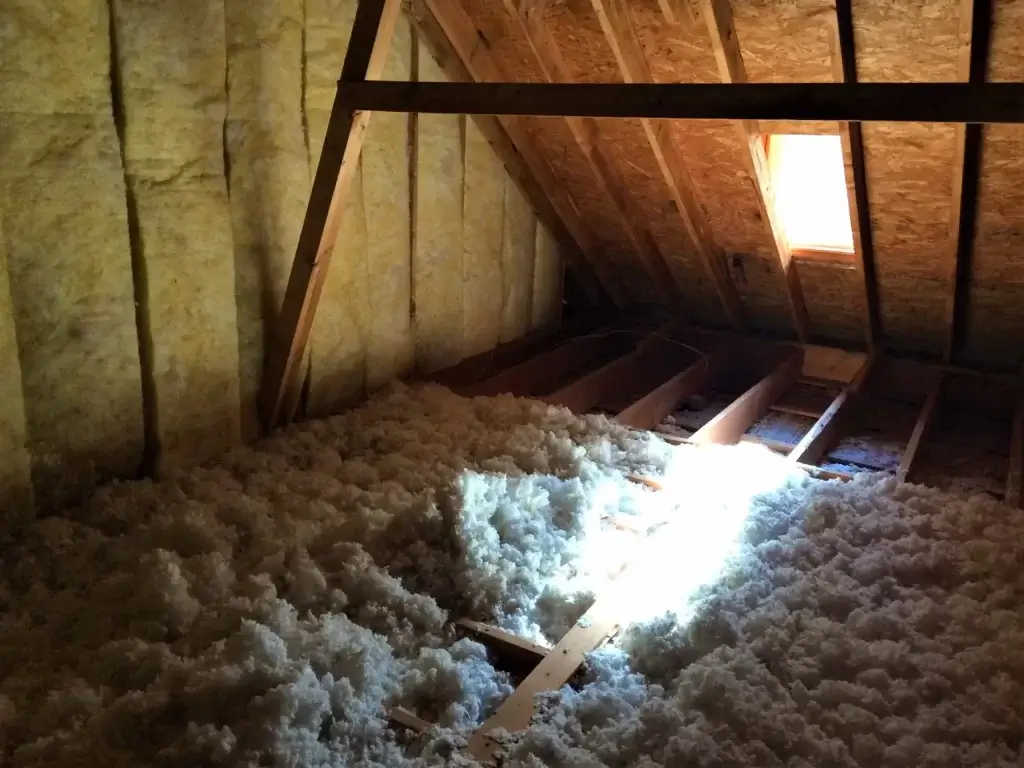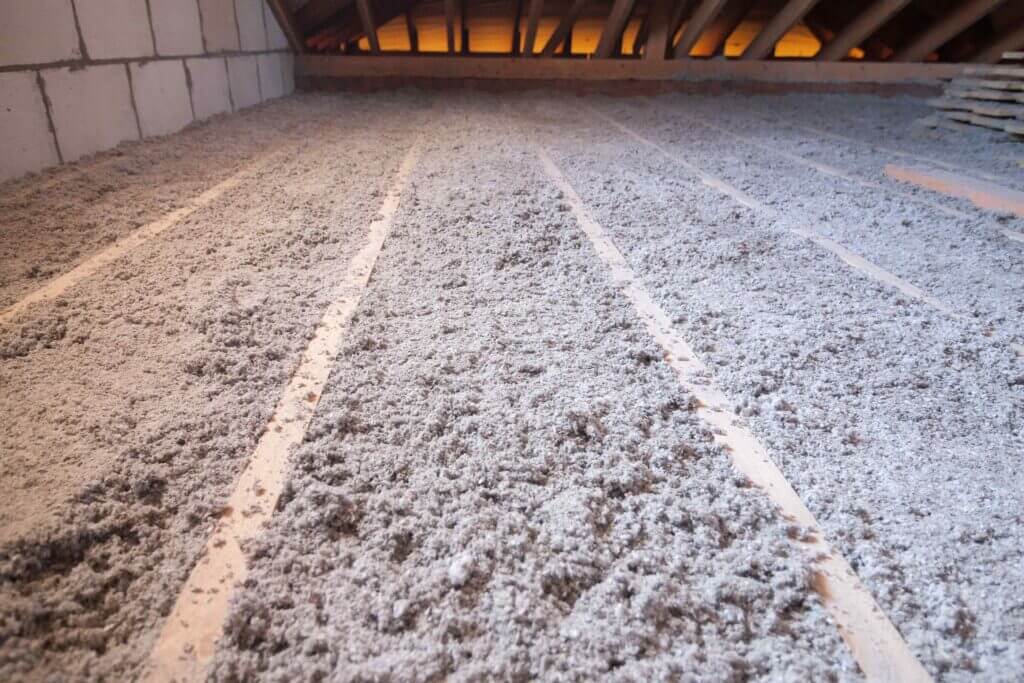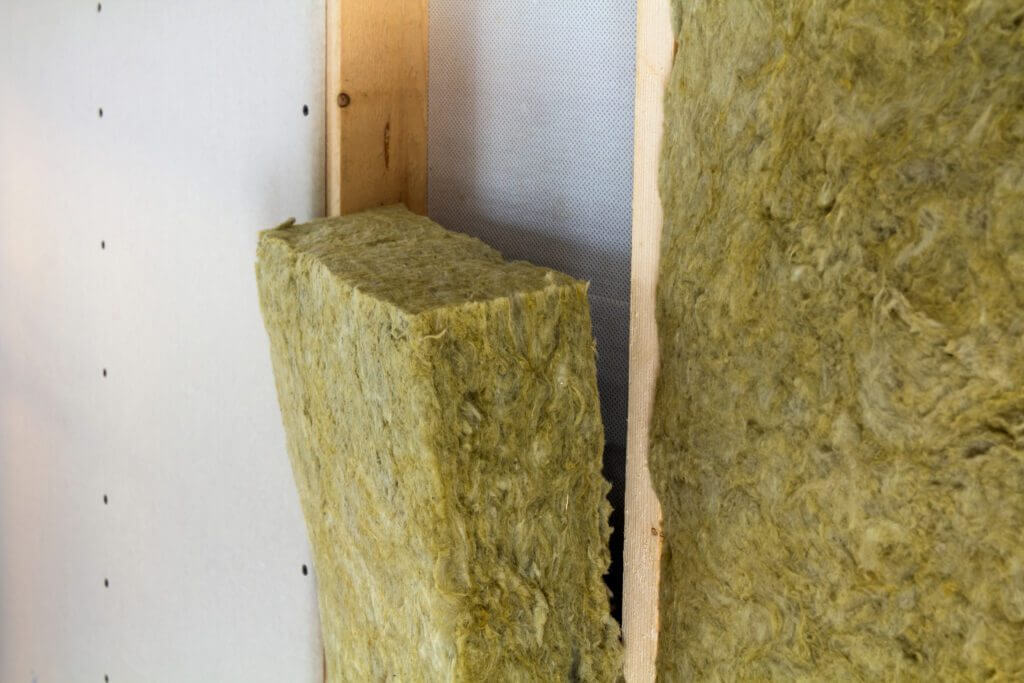However, more people might be eager to chat about attic insulation if they knew that it had the potential to reduce energy costs by making their homes more efficient. New insulation can also make a home quieter, safer and more resistant to pest invasions!
Yes, good insulation really does all that.
Attic insulation suddenly becomes the only topic on our minds when we need to make an upgrade. One choice that many homeowners land on when selecting insulation is something called blown-in insulation.
Choosing the right kind of blown-in insulation does take some research because this isn’t a one-size-fits-all product. Take a look at what you should know about blown in attic insulation cost, benefits and cons before you made a decision.
What is blown-in attic insulation?
Blown-in insulation offers a quick, easy way to fill in existing wall studs and ceiling joists. It is considered a good option for existing homes because it adds insulation without the need to tear down drywall. Here’s a look at some of the pros of blow-in insulation:
- Easily added to attics and walls without major demolition.
- Capable of sealing small gaps and spaces.
- Fills in nicely as it dries to prevent air seepage.
- Excellent for reducing sound transfer between the inside and outside.
While blown-in insulation is a great pick, it’s not ideal for everyone. Some homeowners may not like that it’s necessary to create holes that will later be plugged when using blown-in insulation. However, these plugs are camouflaged to match the color of the home’s siding.
How to shop for blown-in insulation
The most important factor when looking at insulation is its R-value. This is the measure of a material’s resistance to conductive heat flow.
A higher R-value equals greater insulating abilities.
Types of blown-in insulation
As you shop for blown-in insulation, you’ll discover that you actually have three types to choose from:
- Loose-fill fiberglass.
- Cellulose.
- Rock wool fiber.
Loose-fill fiberglass

Average thermal value per inch: R-2.5
Raw average cost: $35 dollars for 106.6 square feet worth of coverage.
Considered light as air, loose-fill fiberglass is made from heated glass that turns to liquid before being spun into hair-like fibers. Here’s the rundown:
- Generally very environmentally friendly because it’s made from recycled paper goods.
- Good flexibility.
- Pretty resistant to settling.
- Not combustible.
- Decreases noise.
- Cheap.
Cellulose

Average thermal value per inch: R-3.7
Raw average cost: $11.50 for 36.7 square feet of coverage.
Made from plant fibers, cellulose is considered a very safe, energy-efficient option. Here’s the rundown:
- Resistant to airflow.
- No corrosion issues.
- Low environmental impact.
While cellulose is more vulnerable to moisture than fiberglass, it’s not much of an issue in a dry climate. However, it’s possible to add a vapor-retardant material if this is a concern.
Rock wool fiber

Average thermal value per inch: R-3.3.
Raw average cost: $140 for 60 square feet of coverage.
Not as common as cellulose and fiberglass, rock wool fiber is made from recycled materials. The most expensive option, it offers premium insulation and protection for a home. Here’s the rundown:
- Offers fire protection.
- Strong moisture resistance.
- Strong sound resistance.
- Repels pests.
- Made from eco-friendly, sustainable materials.
How to determine blown in attic insulation cost
While looking at raw costs for insulation materials allows you to compare the different options available, it’s important to consider all of the factors that influence total project cost.
First, the insulation material you select will sway your project budget. The R-value of the specific product you choose will also impact cost.
Next, insulation costs can vary by location. Product availability and cost of raw materials can also impact the cost of an insulation project. This is something that can change from month to month.
You also have to factor in labor costs. It’s important to hire skilled experts to install your new insulation to ensure that it is done properly based on manufacturer guidelines and local codes. The benefit of going with a pro is that you’ll get the right amount of insulation to maximize the properties of the insulation product you’ve chosen.
Of course, the cost of your project could go up if the pro installing your insulation discovers any rotting or damage in the vicinity of the current insulation.
Can you install blown-in insulation on your own?
There’s nothing stopping a homeowner from purchasing bags of insulation to install on their own. However, this isn’t necessarily advised.
The “ease” of blown-in insulation leads many DIY fans to think that they can blow in new insulation on their own after a quick trip to the hardware store.
Blowing insulation into your walls requires you to drill holes in the stud spaces within your home’s framework. There’s a good chance that you’re going to encounter everything from electrical wires to pipes in the process. In many cases, special equipment is needed to remove old insulation.
It can also be very challenging to work within the attic rafters to ensure that your insulation material is being evenly distributed.
Homeowners who try DIY insulation projects are sometimes surprised by what they find once they start poking around in their attics. Old insulation that has failed can create some pretty serious damage. Remediating the issue to make room for fresh insulation requires careful removal.
It can be very difficult and dangerous to try to remove old insulation in preparation of adding new insulation if you don’t have experience with this type of thing.
Bringing down the cost of blown-in attic insulation
Don’t let the cost up upgrading attic insulation stop you from getting all of the benefits of a more efficient home. One of the perks of making energy-efficient improvements to your home is that you can get government rebates for having work done that benefits you for years to come!
In fact, upgrading attic insulation in your home can come with a rebate totaling $0.25 to $0.35 per square foot!
Rebates paired with the lifetime savings of having more efficient insulation can make the choice easy for many homeowners. The added perks of better soundproofing and pest resistance also make upgrading attic insulation using blown-in insulation a very appealing prospect.
